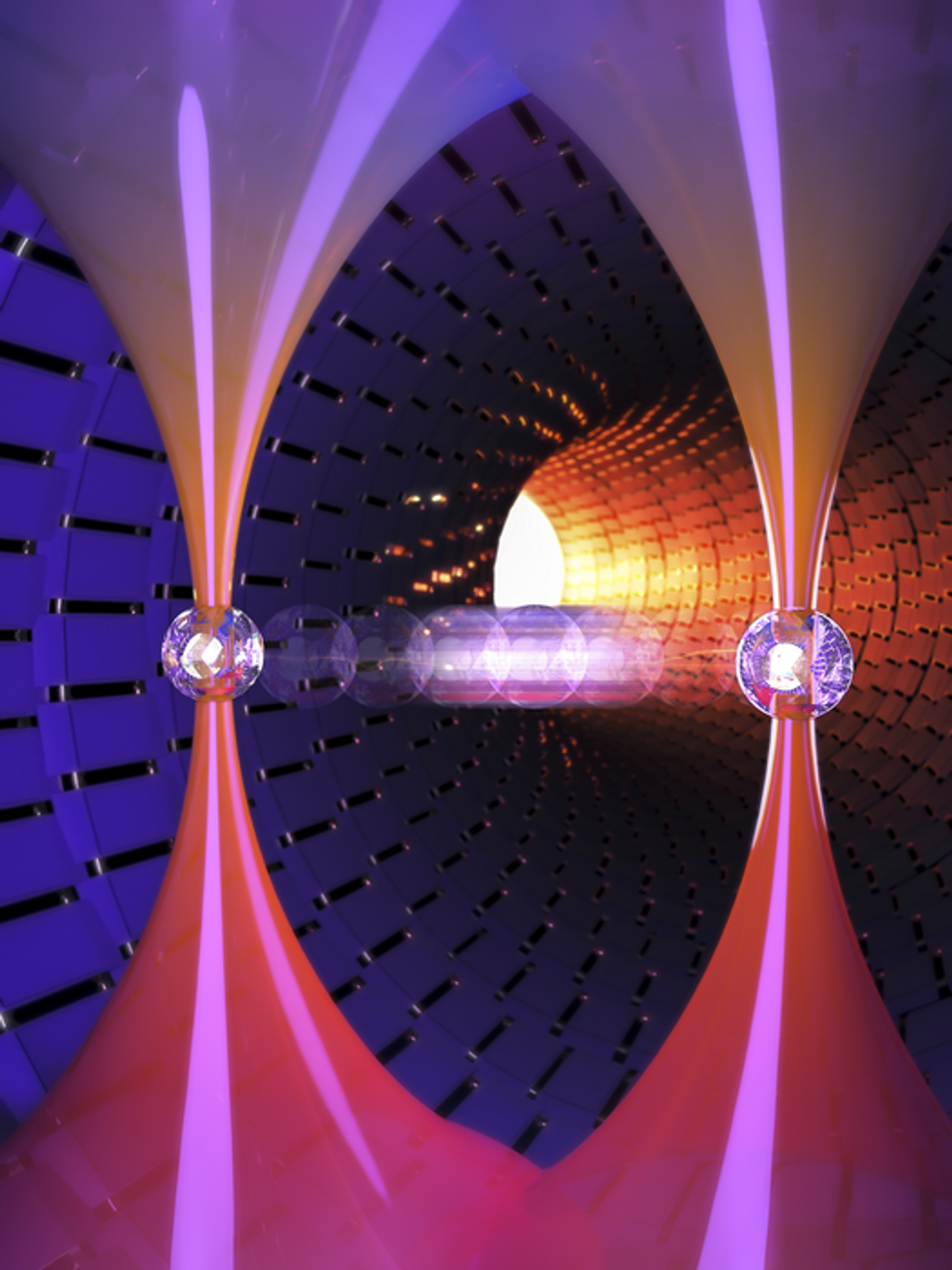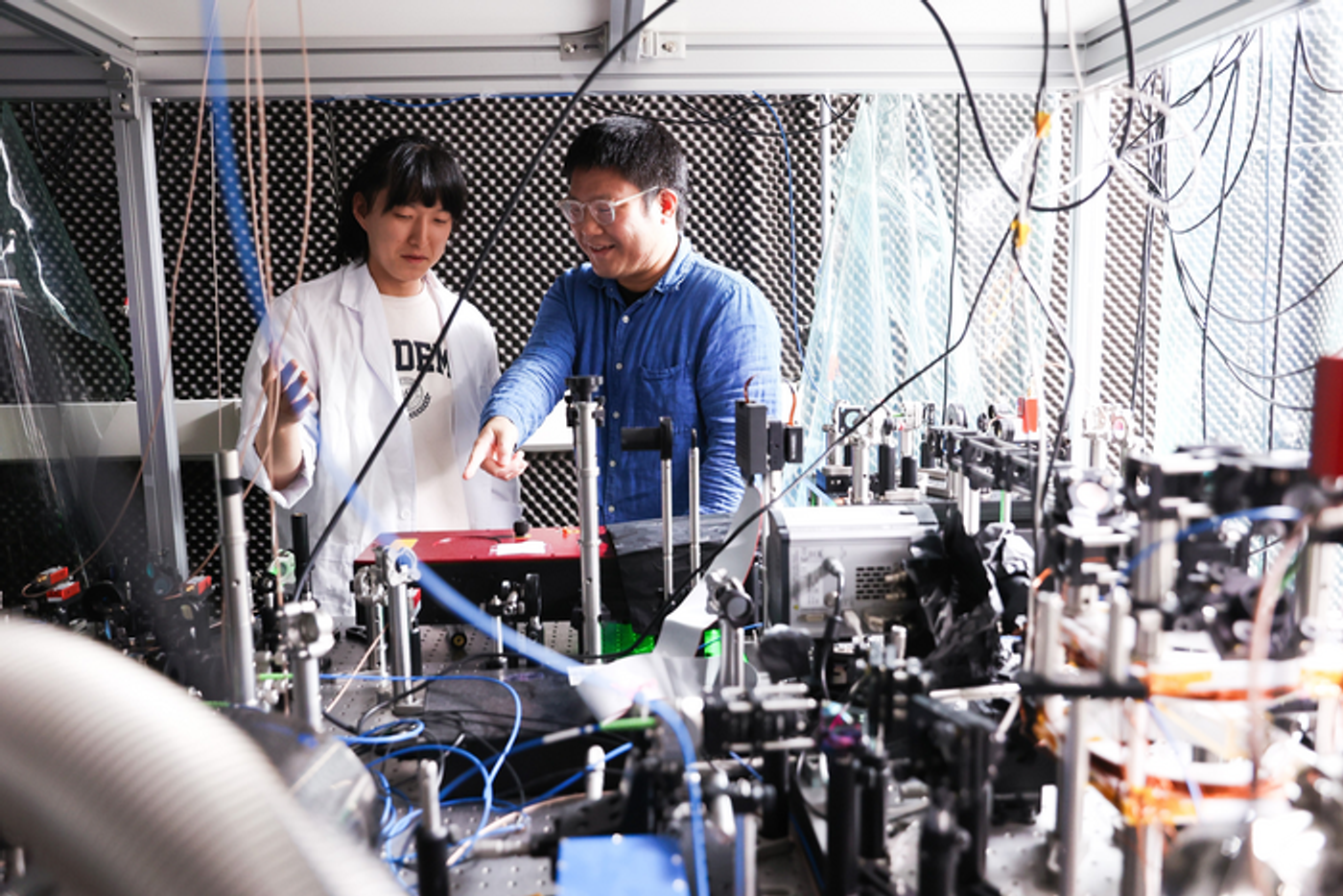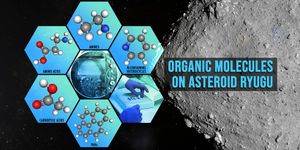Free-Flying Atoms Can Be Tossed Around Using Light
Rendition of two optical traps tossing around individual atoms, which is the first time such a feat has been accomplished. (Credit: Jaewook Ahn, Korea Advanced Institute of Science and Technology)
An international team of scientists led by the Korea Advanced Institute of Science and Technology (KAIST) demonstrate how atoms can be tossed around using optical traps, which consists of a highly focused laser beam that is traditionally used to both hold and move tiny objects such as atoms. However, this is the first time an optical trap has been able to throw an atom and have another trap catch it.
“The freely flying atoms move from one place to the other without being held by or interacting with the optical trap,” said Dr. Jaewook Ahn, who is a professor at KAIST, and a co-author on the study. “In other words, the atom is thrown and caught between the two optical traps much like the ball travels between the pitcher and a catcher in a baseball game.”
Study lead author, Hansub Hwang (left), and study co-author, Andrew Byun (right), pictured with the optical equipment used to produce free-flying atoms. (Credit: Jaewook Ahn, Korea Advanced Institute of Science and Technology)
For the study, the researchers threw rubidium atoms which were chilled down to almost 0 Kelvin (-273.15 degrees Celsius), or near absolute zero of temperature, up to 65 centimeters per second from optical traps spaced 4.2 micrometers apart. With this success, this research has the potential to be used in the development of quantum computers, which are capable of solving problems too complicated for classical computers.
“These types of flying atoms could enable a new type of dynamic quantum computing by allowing the relative locations of qubits — the quantum equivalent to binary bits — to be more freely changed,” explains Dr. Ahn. “It could also be used to create collisions between individual atoms, opening a new field of atom-by-atom chemistry.”
Along with successfully tossing the atoms between optical traps, the researchers also demonstrated the atoms can be tossed through an additional stationary optical trap without them being affected by other atoms during the brief, microscopic journey. In the end, the researchers achieved a 94 percent success rate in producing free-flying atoms, which they hope to increase to 100 percent in future experiments.
Can free-flying atoms be improved and eventually help develop quantum computers in the coming years and decades? Only time will tell, and this is why we science!
Sources: Optica, EurkeAlert!
As always, keep doing science & keep looking up!










